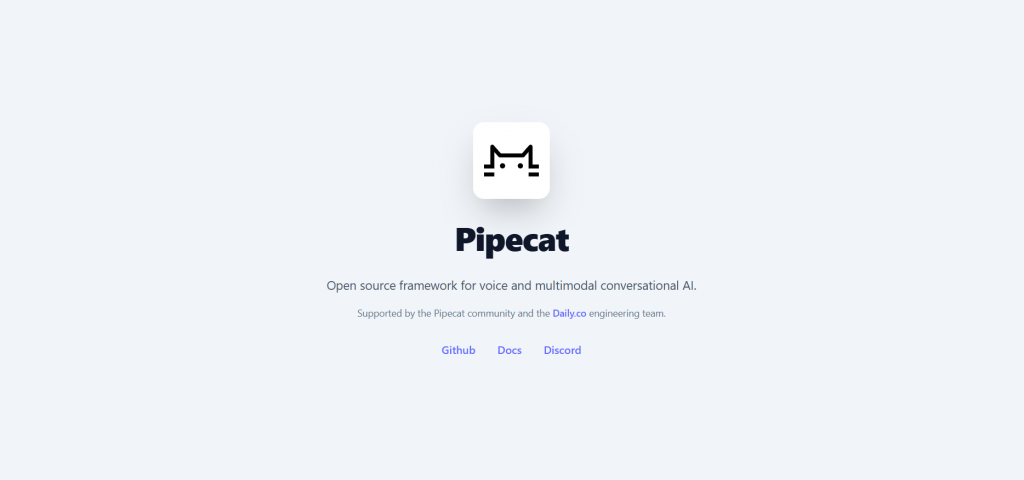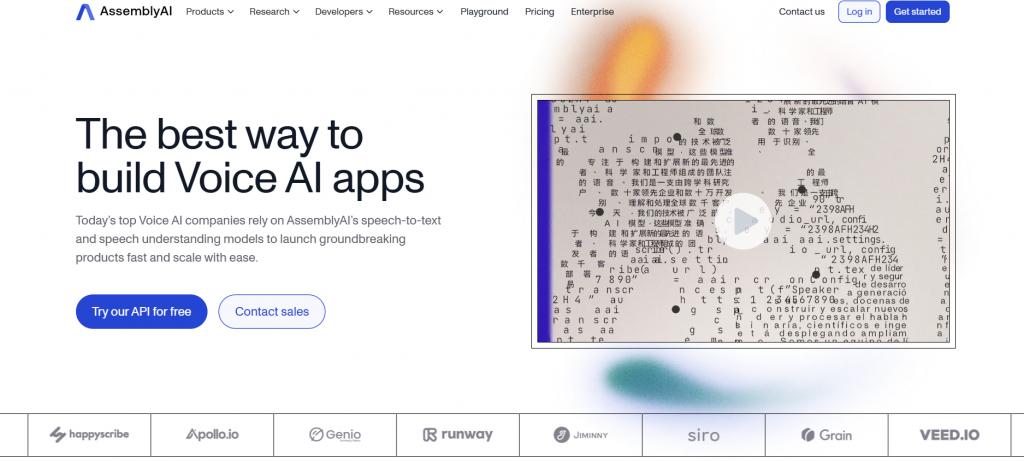As a developer, have you ever felt like you were standing in a car parts store, trying to decide whether you need to buy a high-performance engine or the entire toolkit to build one from scratch? This is the exact feeling many developers have when they start an AI voice project.
The choice of platform is critical, and it often boils down to a fundamental question of build versus buy. This brings us to a crucial comparison for anyone in the voice AI space: Pipecat.ai Vs Assemblyai.com.
The world of voice AI is moving incredibly fast. Businesses no longer want clunky, robotic IVR systems; they demand intelligent, responsive, and natural-sounding voice agents. But building these agents involves navigating a maze of technologies for speech recognition, language understanding, and voice synthesis.
This is where platforms like Pipecat.ai and Assemblyai.com step in, each offering a very different path to the same goal. This article will dissect the Pipecat.ai Vs Assemblyai.com debate, helping you choose the right tool for your next groundbreaking voice application.
Table of contents
- Understanding the Core Difference: Framework vs. API
- Pipecat.ai Vs Assemblyai.com: A Feature-by-Feature Breakdown
- Using Pipecat.ai and AssemblyAI.com Together
- Connecting Your AI to the World with FreJun AI
- Real World Use Cases: Making the Right Decision
- Conclusion: The Right Tool for the Right Job
- Frequently Asked Questions (FAQs)
Understanding the Core Difference: Framework vs. API
The most important thing to understand is that Pipecat.ai and Assemblyai.com are fundamentally different types of tools. They are not direct competitors in the traditional sense; in fact, they can even be used together. One is the workshop, and the other is a powerful, specialized machine within that workshop.
What is Pipecat.ai? The Workshop for Building Voice AI

Think of Pipecat.ai as a complete, open source workshop for building real-time, conversational voice AI. It is a Python framework that gives you all the tools and connecting parts needed to construct a voice agent from the ground up. It does not provide the core AI models itself. Instead, it acts as a high-speed assembly line that connects the different services you choose.
Key Features of Pipecat.ai Include
- Agnostic Framework: Pipecat is model agnostic. This means you have the freedom to plug in any speech to text (STT), large language model (LLM), or text to speech (TTS) service you want. You can use services from OpenAI, Google, ElevenLabs, or even AssemblyAI.
- Real Time Conversation Flow: It is specifically designed to manage the flow of a real time conversation. It handles complex tasks like managing audio streams, detecting when a user starts and stops speaking, and allowing for interruptions, all with very low latency.
- Full Developer Control: As an open source framework, it gives developers complete control over the agent’s logic and behavior. You can customize every aspect of the interaction, making it perfect for building unique and complex voice applications.
Developers choose Pipecat.ai when they need to build a highly customized, interactive voice agent and want full control over the entire conversational pipeline.
Also Read: Building Smarter Apps with VoIP Calling API Integration for Pipecat AI
What is AssemblyAI.com? The High Performance Engine

If Pipecat.ai is the workshop, AssemblyAI.com is a state-of-the-art engine you can buy off the shelf. AssemblyAI is an API platform that provides a powerful suite of AI models focused on understanding audio and video data. Its most famous and powerful feature is its highly accurate speech-to-text transcription service.
Key Features of AssemblyAI.com Include
- Core AI Models as a Service: AssemblyAI offers world-class AI models through a simple API. You send them an audio file or stream, and they send you back the transcribed text and other valuable insights.
- Rich Set of Features: Beyond basic transcription, AssemblyAI provides a huge number of additional features. These include speaker identification (diarization), summarization, sentiment analysis, content moderation, and personally identifiable information (PII) redaction.
- Ease of Use: Because it is an API service, it is incredibly easy to integrate into any application. You do not need to worry about managing complex AI models or infrastructure. You just make an API call.
Developers choose AssemblyAI.com when their primary need is to accurately transcribe audio at scale and extract meaningful information from it.
Also Read: How Does VoIP Calling API Integration for LangChain AutoGen Microsoft Works?
Pipecat.ai Vs Assemblyai.com: A Feature-by-Feature Breakdown
To truly understand the Pipecat.ai Vs Assemblyai.com comparison, let’s place their features side by side. This will make it clear where each platform excels.
| Feature | Pipecat.ai | AssemblyAI.com |
| Primary Function | Open source conversational AI framework | API platform for speech to text and audio intelligence |
| Core Offering | A toolkit to build and orchestrate voice agents | A suite of production ready AI models (especially STT) |
| Flexibility | Extremely high (bring your own STT, LLM, TTS) | High within its ecosystem (many features, some configuration) |
| Main Use Case | Building interactive, real time voice conversations | Transcribing audio, analyzing speech data, extracting insights |
| Control Level | Full control over application logic and data flow | API level control over model features and outputs |
| Best For | Developers building custom voice agents from scratch | Developers needing best in class transcription and audio analysis |
As you can see, the choice in the Pipecat.ai Vs Assemblyai.com discussion is not about which is better overall, but what your project requires. Do you need to build the conversational logic, or do you need a powerful speech recognition engine?
Also Read: How VoIP Calling API Integration for CrewAI Improves AI Agents?
Using Pipecat.ai and AssemblyAI.com Together
Here is a crucial insight: the most powerful applications might not choose one or the other. They might use both.
Imagine you are using the Pipecat.ai framework to build an advanced AI sales assistant. You have designed the entire conversational flow, how it should handle objections, and when it should ask qualifying questions. Now, you need a critical component: a really fast and accurate speech-to-text service to understand what the customer is saying in real time.
In this scenario, you could easily plug AssemblyAI’s real-time transcription API into your Pipecat.ai framework.
- Pipecat.ai would manage the overall conversation, sending audio to AssemblyAI.
- AssemblyAI.com would instantly transcribe the customer’s speech and send the text back.
- Pipecat.ai would then send that text to your chosen LLM for processing and continue the conversation.
This combination gives you the best of both worlds: the complete control and flexibility of a framework, and the raw power and accuracy of a specialized AI service. This collaborative potential is a key takeaway in the Pipecat.ai Vs Assemblyai.com evaluation.
Connecting Your AI to the World with FreJun AI
Whether you build your voice agent with Pipecat.ai, use AssemblyAI for transcription, or combine them, there is a critical piece of the puzzle missing: how do you connect this brilliant AI to an actual phone call? This is where FreJun AI provides the essential infrastructure.
We handle the complex voice and telephony layer so you can focus on your AI. FreJun AI provides the real-time, low-latency audio streaming from the phone network directly to your application and back again.
We are the bridge that allows your sophisticated AI agent to have a clear, lag-free conversation with a real person on the other end of the line.
Also Read: Why Developers Choose VoIP Calling API Integration for OpenAgents?
Real World Use Cases: Making the Right Decision
Let’s look at some practical examples to finalize your Pipecat.ai Vs Assemblyai.com decision.
Scenario 1: Building an AI Restaurant Host
You want to build a voice agent that can take reservations over the phone for a restaurant. This requires a dynamic conversation about dates, times, party sizes, and special requests.
- Best Choice: Pipecat.ai. You need the framework to manage this complex, back and forth dialogue. You can then choose your favorite STT and TTS services to plug into it.
Scenario 2: Analyzing Customer Support Calls
Your company has thousands of hours of recorded customer support calls. You want to analyze these recordings to find out why customers are calling, what products they mention, and whether they are happy or upset.
- Best Choice: AssemblyAI.com. Its powerful transcription and audio intelligence features like summarization and sentiment analysis are perfectly designed for this task. You simply need to process the audio, not build a live agent.
Also Read: How Does VoIP Calling API Integration for LlamaIndex Help Developers?
Conclusion: The Right Tool for the Right Job
In the end, the Pipecat.ai Vs Assemblyai.com comparison is about understanding your primary goal. They are both excellent tools loved by developers, but they serve different purposes.
Choose Pipecat.ai when your mission is to build the conversational agent itself. You need a flexible, powerful framework to orchestrate a real-time dialogue and want complete control over every component.
Choose AssemblyAI.com when your mission is to understand audio. You need a fast, accurate, and feature-rich AI service to transcribe speech and extract valuable data, without needing to build the conversational structure around it.
By clearly defining your project’s needs, you can move past the Pipecat.ai Vs Assemblyai.com question and confidently select the platform that will lead you to success.
Also Read: Phone Systems for Small Business: Choosing the Right Solution
Frequently Asked Questions (FAQs)
Absolutely. This is a very powerful combination. You can use Pipecat.ai to manage the conversational flow and plug in AssemblyAI as your high performance speech to text engine.
Pipecat.ai is a framework specifically designed for building real time, conversational applications. AssemblyAI offers a real time transcription API that can be a key component in such an application. So, you would use Pipecat.ai for the structure and could use AssemblyAI for the real time STT function within it.
The Pipecat.ai framework is open source and free. However, you will have to pay for the third party services you connect to it (like LLMs and TTS APIs) and for the cloud infrastructure to host it.
AssemblyAI offers a wide range of audio intelligence models through its API, including automatic summarization, speaker identification, sentiment analysis, topic detection, and the ability to redact sensitive information.
